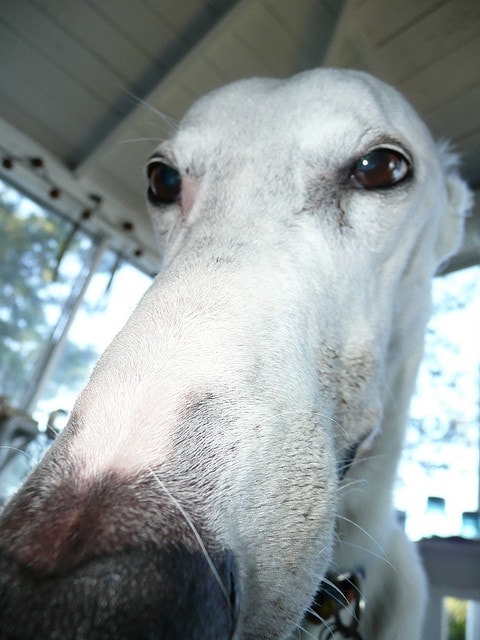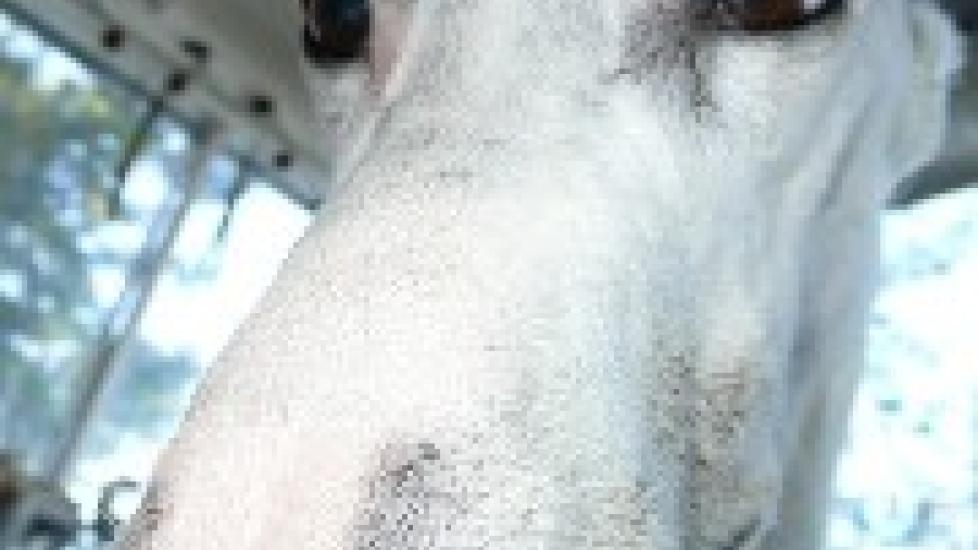Variations of Normal: 8 Seemingly Unusual Parts of the Dog Anatomy
So I just got back from Las Vegas, where I had gone to catch Weezer, one of my favorite rock bands, in concert. (I do things like this to cling to that last remaining shred of my carefree pre-mom self. I’m still fun and hip, darn it).
It was awesome. The show was general admission, so we pushed our way to about 20 feet from the stage. The crowd consisted mostly of college-age locals of the slightly nerdy yet cool variety. I consider myself an older version of that category.
Elsewhere in Vegas, the crowd was different. There was a marked overgrowth of young ladies teetering around in high heels and astonishingly short, incredibly tight, little dresses. I’m not sure how these girls were able to breathe, sit, or walk upstairs.
Mad props to the plethora of role models in Hollywood that brought us this trend.
Lots of leadership material there.
And since I don’t get out beyond the suburbs much, I’m not sure if that’s the norm or just a variant — a Vegas thing.
Given that I haven’t recovered from that trip yet, you’ll forgive me if I can’t think of a snappy segue into my topic, which is: variants of normal dog anatomy that clients find worrisome.
1. Occipital protuberance/sagittal crest. This is a fin-like projection or knob-like bump on of the top of a dog’s skull. They are more prominent in dogs with long noses, like Dobermans or Collies. Generally they are normal skull bones, not tumors. Occasionally, if they suddenly become really prominent, they can indicate muscle wasting. Oh, and did I mention I had to look occipital protuberance and sagittal crest up in reference books? Apparently I’ve been calling them the wrong thing for years.
2. Perirenal Fat pad. These matching lumps occur generally in overweight dogs just behind the rib cage on either side of the spine. They are basically dog love handles and not cancer.
3. Floating ribs. Some dogs, often Dachshunds, have extra ribs sticking out that feel like tumors under the skin or have weird cartilage at the ends of their ribs that make them "flare" out funny.
4. The "tick." Often these cases are brought in by the "senior" crowd. The owner thinks their dog has a tick, but despite all their picking, it just won’t come off. The dog, in fact, has a skin tag – usually one that is bleeding. Ticks only bury their mouthparts, not their little legs. So if you think your dog has a tick, get a magnifying lens and look for those legs!
5. Reverse sneeze. This is caused by nasal drainage or anything that tickles the back of a dog’s throat (lots of videos of it on YouTube). Dog stiffens, eyes bulge, starts snorting uncontrollably. It’s not a seizure or asthma attack, and the dog is not choking. (If the dog is panicking, turning blue, pawing at its face, drooling etc., then it could be choking!) If you’re not sure, best to just take it to the vet. If it’s episodic, videotape the episode and bring it in with the dog.
6. "My dog cries when I pick him up by the armpits." How would you like to be picked up by your armpits? There are huge (I know they’re huge because I did my first front leg amputation last month, and let me tell you … they’re big!) nerves — called the brachial plexus — that run through the armpits. When you grab there to pick up the dog, you stretch those nerves, it probably hurts a little and the dog yelps. The solution to this one is to not pick the dog up by his or her pits.
7. Lenticular sclerosis. You know when old dogs have that bluish cast to their eyes? Usually, it’s not cataracts. It is a normal aging process that results from the thickening and stiffening of the fibers in the lens, making them hazy and pale. Doesn’t seem to affect dog vision.
8. Elbow Callus. If your dog likes to lie on hard floors, he may have thickened, brown, hairless, gnarly patches on the outside of his elbow(s). That’s his body’s way of protecting that bony protuberance; it is not cancer, usually.
I like it when dogs come in with a problem and the solution is simple; it’s like I just hit a home run. There are exceptions to each and every rule though, so don’t you go skipping a trip to the vet just because I said this isn’t something to worry about!
Sometimes reassurance from a trained professional is worth its weight in gold. But then again, reassurance doesn’t weigh anything … so that doesn’t work. Well, you know what I mean :)
Now if I can just do something about those skinny Vegas girls …

Dr. Vivian Cardoso-Carroll
Pic of the day: Big long nose freaky Fred by bettlebrox

